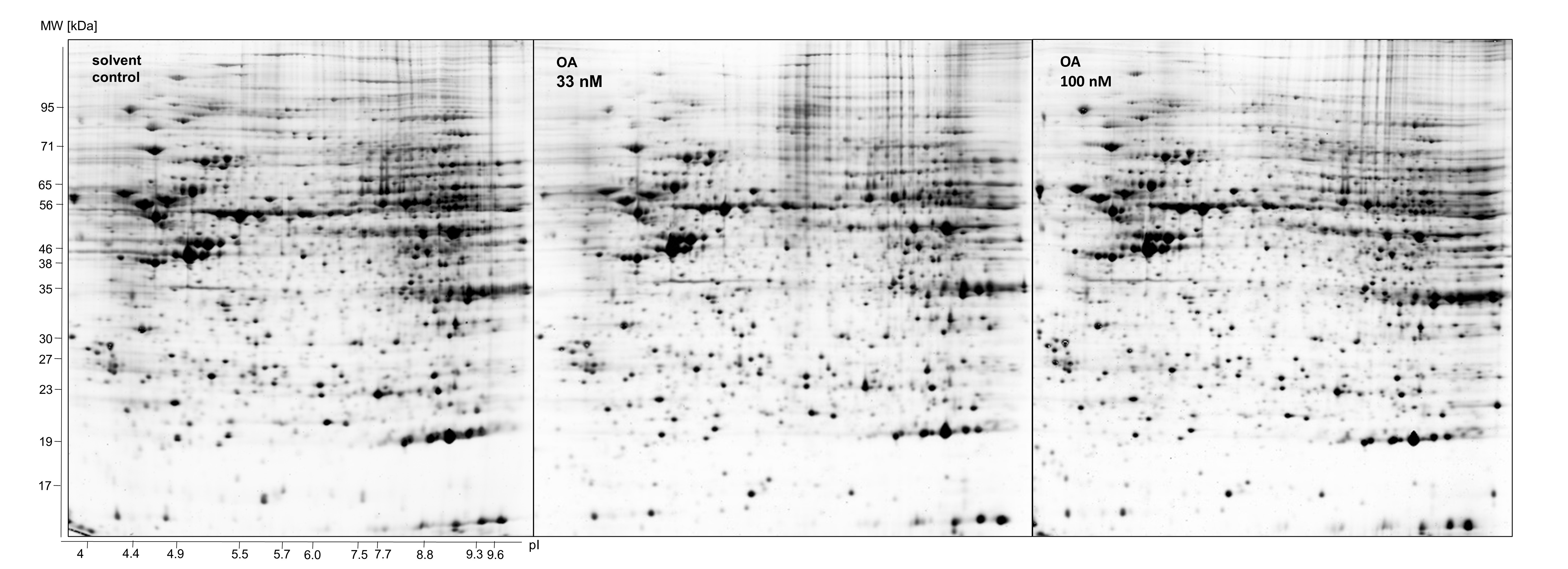Proteomic analysis of hepatic effects of okadaic acid in HepaRG human liver cells
DOI:
https://doi.org/10.17179/excli2023-6458Keywords:
okadaic acid, HepaRG cell lineAbstract
The marine biotoxin okadaic acid (OA) is produced by dinoflagellates and enters the human food chain by accumulating in the fatty tissue of filter-feeding shellfish. Consumption of highly contaminated shellfish can lead to diarrheic shellfish poisoning. However, apart from the acute effects in the intestine, OA can also provoke toxic effects in the liver, as it is able to pass the intestinal barrier into the blood stream. However, molecular details of OA-induced hepatotoxicity are still insufficiently characterized, and especially at the proteomic level data are scarce. In this study, we used human HepaRG liver cells and exposed them to non-cytotoxic OA concentrations for 24 hours. Global changes in protein expression were analyzed using 2-dimensional gel electrophoresis in combination with mass-spectrometric protein identification. The results constitute the first proteomic analysis of OA effects in human liver cells and indicate, amongst others, that OA affects the energy homeostasis, induces oxidative stress, and induces cytoskeletal changes.

Downloads
Additional Files
Published
How to Cite
License
Copyright (c) 2023 Leonie T. D. Wuerger, Greta Birkholz, Axel Oberemm, Holger Sieg, Albert Braeuning

This work is licensed under a Creative Commons Attribution 4.0 International License.
Authors who publish in this journal agree to the following terms:
- The authors keep the copyright and grant the journal the right of first publication under the terms of the Creative Commons Attribution license, CC BY 4.0. This licencse permits unrestricted use, distribution and reproduction in any medium, provided that the original work is properly cited.
- The use of general descriptive names, trade names, trademarks, and so forth in this publication, even if not specifically identified, does not imply that these names are not protected by the relevant laws and regulations.
- Because the advice and information in this journal are believed to be true and accurate at the time of publication, neither the authors, the editors, nor the publisher accept any legal responsibility for any errors or omissions presented in the publication. The publisher makes no guarantee, express or implied, with respect to the material contained herein.
- The authors can enter into additional contracts for the non-exclusive distribution of the journal's published version by citing the initial publication in this journal (e.g. publishing in an institutional repository or in a book).





